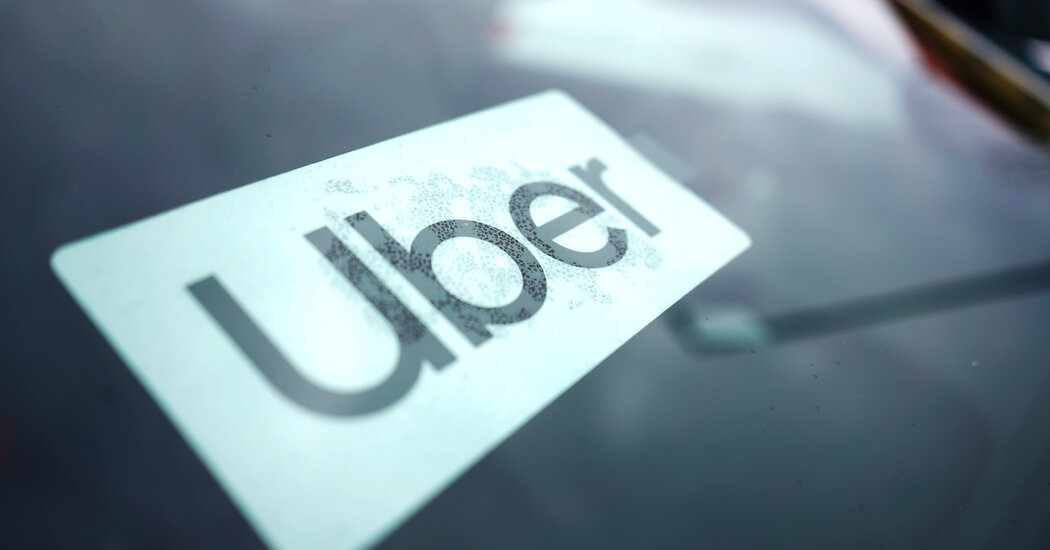Uber posts record revenue but loses nearly $2 billion on investments.

Uber on Tuesday reported record revenue in its most recent quarter and said more drivers and couriers were using its platform than ever before, suggesting that the company is emerging from a pandemic-fueled downturn in a far better position than it was two years ago. Still, Uber lost nearly $2 billion from its stakes in other ride-hailing services.
The company outperformed analysts’ expectations, shaking off concerns over high inflation to post $8 billion in revenue, a 105 percent surge from a year earlier, when the world was just emerging from pandemic lockdowns. Growth in Uber’s ride-hailing business drove the increase, though its food delivery arm jumped 37 percent from a year earlier.
The record 122 million people using Uber each month accounted for a combined 1.8 billion trips in the April-to-June quarter, up 24 percent from a year earlier.
Uber’s stock rose more than 13 percent in early trading on Tuesday.
Uber said it had generated $382 million in free cash flow — its first positive free cash flow in a quarter, meaning it generated more money from its business operations than it lost. That’s a milestone sought by Dara Khosrowshahi, the chief executive, as he tries to guide Uber toward consistently turning a profit. As the tech and business markets have cooled, Mr. Khosrowshahi has told his employees to cut costs and focus on profitability.
“I challenged the team to meet our profitability commitments even faster than planned, and the team delivered,” Mr. Khosrowshahi wrote in prepared remarks Tuesday.
More About Uber
- Antitrust Lawsuit: A group of drivers seeking class-action status have sued Uber and Lyft, claiming that the companies are engaging in anticompetitive practices.
- Performance: Uber continued its recovery from the pandemic lull, reporting $6.9 billion in revenue for the first three months of 2022, up 136 percent from a year earlier.
- Masks: As transportation companies relax their Covid-related policies, Uber said it would stop requiring riders and drivers in the United States to wear masks.
- New Partnerships: The ride-hailing service is teaming up with two yellow cab companies in New York City, and is close to a similar deal with a San Francisco taxi outfit.
- Interview: Jill Hazelbaker, a top executive, helped Uber weather sexual assault accusations. Here she talks about what it took.
Uber’s strong results, on the heels of more mixed reports from other tech companies like Amazon and Microsoft, were not without blemishes. The company still lost $2.6 billion, including $1.7 billion from its investments in other ride-hailing businesses like Aurora, Grab and Zomato.
But the company pointed to other positive signs. Though Uber has had to contend with high gas prices and is entangled in a variety of legal disputes across the United States over the employment status of its drivers, it now has nearly five million drivers around the world, a record number and a 31 percent increase from a year earlier.
On Friday, Uber said it would begin allowing drivers to see their destination and earnings for a trip before accepting a passenger, a change that the company said was aimed at giving its drivers more flexibility and support. The new program, Upfront Pricing, has been tested in about 20 U.S. markets this year and will be rolled out to most of the country, except California and some other markets, in the coming months, said Alix Anfang, an Uber spokeswoman.
On a call with investors on Tuesday morning, Mr. Khosrowshahi pitched high inflation as a potential positive for the company.
He said that in a leaner, more cost-conscious environment, Uber’s competitive advantages over its rivals like Lyft — such as its global reach and wide array of offerings that include both food delivery and ride-hailing — would be more obvious.
“No one wishes for a tough economic environment or elevated inflation,” he said, but “there’s no question that this operating environment is stronger for us.”
And he said drivers had been lured to Uber in part because of concerns about increasing grocery prices and other costs of living. The number of new U.S. Uber driver sign-ups in the quarter was up 76 percent from the same period a year ago, Mr. Khosrowshahi said, and more than 70 percent of those drivers said soaring inflation played a role in their decision to ferry passengers.
“We could be seeing evidence where it’s helping us, in that it’s a very significant consideration base for drivers coming onto the system,” he said of inflation.
That influx of drivers has helped decrease average Uber wait times for passengers, which have declined from five to six minutes to about 4.5 minutes more recently, he said.